
marlin
FP16xINT4 LLM inference kernel that can achieve near-ideal ~4x speedups up to medium batchsizes of 16-32 tokens.
Stars: 542
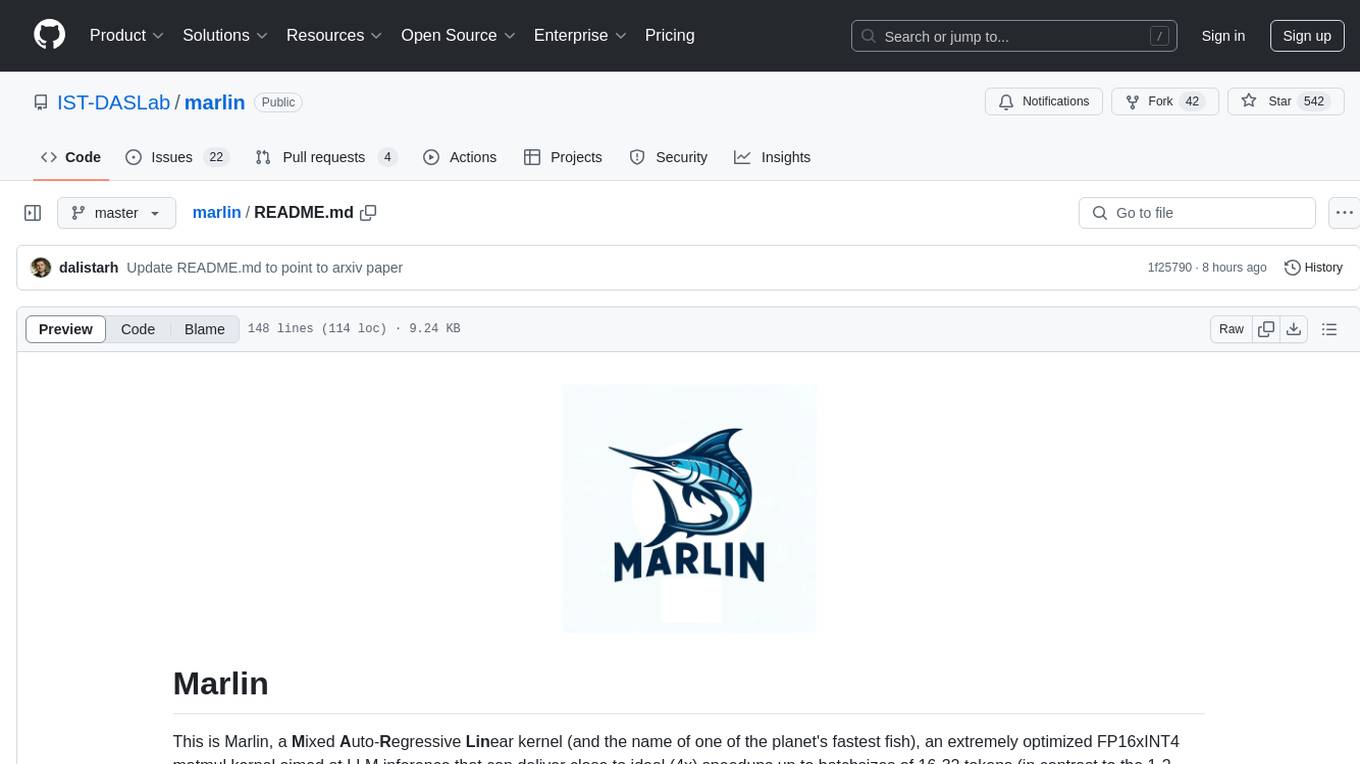
Marlin is a highly optimized FP16xINT4 matmul kernel designed for large language model (LLM) inference, offering close to ideal speedups up to batchsizes of 16-32 tokens. It is suitable for larger-scale serving, speculative decoding, and advanced multi-inference schemes like CoT-Majority. Marlin achieves optimal performance by utilizing various techniques and optimizations to fully leverage GPU resources, ensuring efficient computation and memory management.
README:
This is Marlin, a Mixed Auto-Regressive Linear kernel (and the name of one of the planet's fastest fish), an extremely optimized FP16xINT4 matmul kernel aimed at LLM inference that can deliver close to ideal (4x) speedups up to batchsizes of 16-32 tokens (in contrast to the 1-2 tokens of prior work with comparable speedup). This makes Marlin well suited for larger-scale serving, speculative decoding or advanced multi-inference schemes such as CoT-Majority.
Most modern GPUs feature FLOP to byte ratios of around 100-200. Hence, as long as we perform less than 25-50 (tensor core) multiply-accumulates per 4-bit quantized weight, it should (theoretically) be possible to maintain near ideal 4x speedup over FP16 weights. This means that the full performance benefits of weight-only quantization should, in principle, extend to batchsizes 4-8x larger than what is currently achieved by existing kernels. However, actually realizing this in practice is very challenging, since we essentially need to fully utilize all available GPU resources (global memory, L2 cache, shared memory, tensor cores, vector cores), simultaneously. Marlin accomplishes this through numerous techniques and optimizations, briefly sketched below:
- We organize computation in such a way that all activations are essentially always fetched from L2 cache and are further reused several times within registers to make sure that repeated loading from shared memory does not become a bottleneck either.
- We execute global weight loads asynchronously, to all compute operations but also activations loads, with a cache policy that allows immediate eviction in order to not unnecessary pollute the L2 cache with values that are never reused.
- We perform shared memory loads, whose footprint is quite significant due to relatively large activations, via double buffering to overlap them with computation and global loads.
- We carefully order dequantization and tensor core instructions to ensure that both GPU pipelines are well saturated and do not bottleneck each other.
- In general, both quantized weights and group scales are reshuffled offline, into a layout that gives ideal access patterns during execution, allowing for instance directly dequantizing weights into tensor core organization.
- We have multiple warps in a threadblock compute partial results of the same output tile, in order to achieve higher warp counts, maximizing compute and latency hiding, without increasing the output tile size, which would make good partioning on realistic matrices difficult.
- All loads use maximum vector length for peak efficiency and we also perform several layout transformations to guarantee that all shared memory reads and writes are conflict-free, in particular for matrix loading instructions, and that global reduction happens at minimal memory overhead.
- We set up and unroll loops such that the majority of memory offsets are static, minimizing runtime index calculations.
- We implement a "striped" paritioning scheme where the segment of tiles processed by each SM may (partially) span over multiple column "slices". This leads to good SM utlization on most matrix shapes, while minimizing required global reduction steps.
- Global reduction happens directly in the output buffer (temporarily downcasting FP32 accumulators to FP16) which is kept in L2 cache; reduction operations are generally optimized to avoid any unnecessary reads or writes as well.
- Overall, the kernel's PTX assembly was extensively analyzed in NSight-Compute, and the CUDA code features several more redundant or slightly suboptimal constructions that however compile to faster PTX.
We first compare the performance of Marlin with other popular 4-bit inference kernels, on a large matrix that can be ideally partioned on an NVIDIA A10 GPU. This allows all kernels to reach pretty much their best possible performance. All kernels are executed at groupsize 128 (however, we note that scale formats are not 100% identical).
While existing kernels achieve relatively close to the optimal 3.87x (note the 0.125 bits storage overhead of the group scales) speedup at batchsize 1, their performance degrades quickly as the number of inputs is increased. In contrast, Marlin delivers essentially ideal speedups at all batchsizes, enabling the maximum possible 3.87x speedup up to batchsizes around 16-32.
Due to its striped partioning scheme, Marlin brings strong performance also on real (smaller) matrices and various GPUs. This is demonstrated by the below results, where we benchmark, at batchsize 16, the overall runtime across all linear layers in Transformer blocks of popular open-source models.
Finally, we also study what performance can be sustained over longer periods of time, at locked base GPU clock. Interestingly, we find that reduced clock speeds significantly harm the relative speedups of prior kernels, but have no effect on Marlin's virtually optimal performance (relative to the lower clock setting).
- CUDA >= 11.8 (in particular also for the
nvcccompiler, the version of which should match with torch) - NVIDIA GPU with compute capability >= 8.0 (Ampere or Ada, Marlin is not yet optimized for Hopper)
torch>=2.0.0-
numpyFor running quantization script one also needs: transformersdatasetssentencepiece
If all requirements are met, it should be possible to install Marlin by calling
pip install .
in the root folder of this repository.
Afterwards, the easiest way to use the Marlin kernel is via a marlin.Layer, a torch-module representing a Marlin
quantized layer. It allows converting a "fake-quantized" (dequantized values stored in FP16) torch.Linear layer into
the compressed Marlin format via marlin.Layer.pack(linear, scales). Alternatively, the kernel can also be called
directly through marlin.mul(..), provided that weights and scales have already been appropriately preprocessed (see
marlin.Layer.pack(...)). The kernel itself can be found in the self-contained marlin/marlin_cuda_kernel.cu file,
which does not contain any dependencies beyond base-CUDA and should thus be easy to integrate into other lower-level
frameworks.
Correctness tests can be executed via python test.py and benchmarks via python bench.py. Please note that in order
to reproduce our "sustainable performance" benchmarks, the GPU clocks need to be locked to their respective base values
using:
sudo nvidia-smi --lock-gpu-clocks=BASE_GPU_CLOCK --lock-memory-clocks=BASE_MEM_CLOCK
Additionally, if ECC is enabled (e.g., on an A10), then the maximum achievable memory bandwidth will be 10-15% lower than in the official spec sheet as every memory requests will contain checksum overheads. This can be disabled via
sudo nvidia-smi -e 0
which we do in our A10 benchmarks.
In the gptq subfolder, we also provide a slightly improved version of the GPTQ algorithm, with better group grid clipping and non-uniform calibration sample length, that can produce Marlin-compatible 4-bit versions of Llama2 models.
Additionally, there is a script to evaluate such compressed models (using Marlin kernels) in the popular LLM eval harness.
The script below was tested with lm-eval-harness==0.4.0 and may not work with newer or older versions.
Here are corresponding sample commands (marlin, transformers and datasets packages must be installed):
% Compress Llama2 model and export model in Marlin format.
python llama2.py LLAMA2_CHECKPOINT --wbits 4 --save checkpoint.pt
% Perform perplexity evaluation of uncompressed model.
python llama2.py LLAMA2_CHECKPOINT
% Evaluate compressed model (with Marlin kernels) in the eval harness.
python eval.py --model hf --model_args pretrained=LLAMA2_CHECKPOINT --tasks mmlu \
--marlin_checkpoint checkpoint.marlin.g128
% Evaluate full precision baseline.
python eval.py --model hf --model_args pretrained=LLAMA2_CHECKPOINT --tasks mmlu
We measure the following WikiText and Red-Pajama perplexities, as well as MMLU zero-shot accuracy, for 4-bit (group=128) Marlin models:
| Llama2 | Wiki2 (FP16) | Wiki2 (INT4) | RedPaj (FP16) | RedPaj (INT4) | MMLU (FP16) | MMLU (INT4) |
|---|---|---|---|---|---|---|
| 7B | 5.12 | 5.27 | 6.14 | 6.30 | 41.80 | 40.07 |
| 13B | 4.57 | 4.67 | 5.67 | 5.79 | 52.10 | 51.13 |
| 70B | 3.12 | 3.21 | 4.74 | 4.81 | 65.43 | 64.81 |
We note that this GPTQ example is currently intended mostly as a demonstration of how to produce accurate Marlin models and as an end-to-end validation of kernel correctness (rather than to be a flexible compression tool).
If you found this work useful, please consider citing:
@article{frantar2024marlin,
title={MARLIN: Mixed-Precision Auto-Regressive Parallel Inference on Large Language Models},
author={Frantar, Elias and Castro, Roberto L and Chen, Jiale and Hoefler, Torsten and Alistarh, Dan},
journal={arXiv preprint arXiv:2408.11743},
year={2024}
}
For Tasks:
Click tags to check more tools for each tasksFor Jobs:
Alternative AI tools for marlin
Similar Open Source Tools

marlin
Marlin is a highly optimized FP16xINT4 matmul kernel designed for large language model (LLM) inference, offering close to ideal speedups up to batchsizes of 16-32 tokens. It is suitable for larger-scale serving, speculative decoding, and advanced multi-inference schemes like CoT-Majority. Marlin achieves optimal performance by utilizing various techniques and optimizations to fully leverage GPU resources, ensuring efficient computation and memory management.
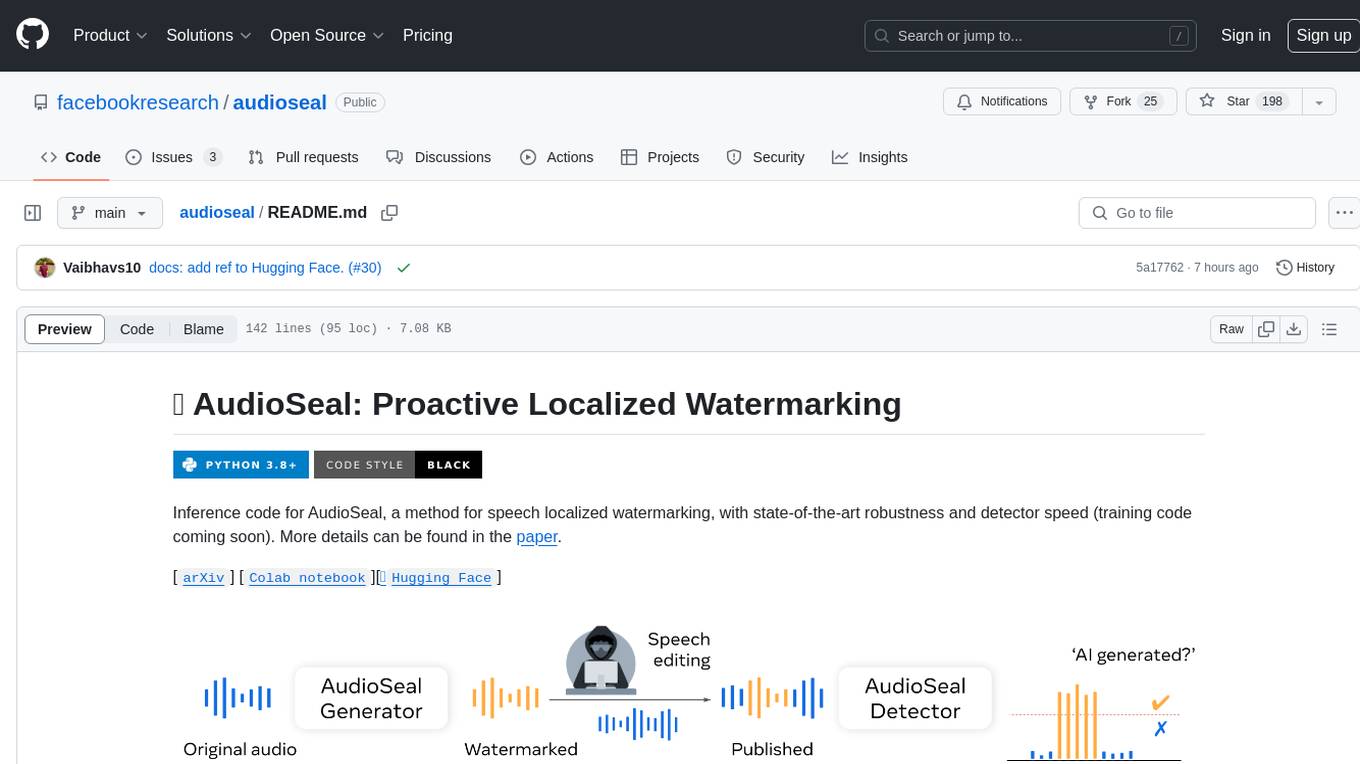
audioseal
AudioSeal is a method for speech localized watermarking, designed with state-of-the-art robustness and detector speed. It jointly trains a generator to embed a watermark in audio and a detector to detect watermarked fragments in longer audios, even in the presence of editing. The tool achieves top-notch detection performance at the sample level, generates minimal alteration of signal quality, and is robust to various audio editing types. With a fast, single-pass detector, AudioSeal surpasses existing models in speed, making it ideal for large-scale and real-time applications.
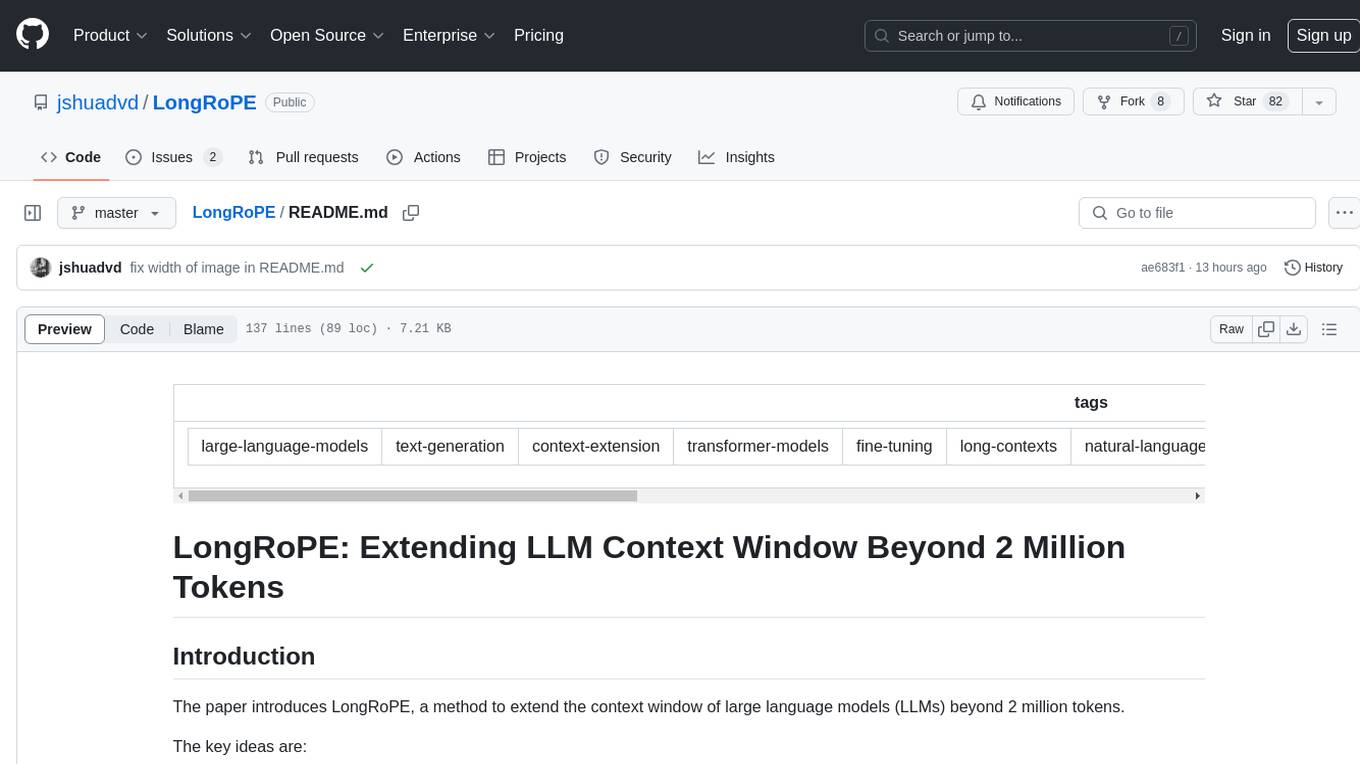
LongRoPE
LongRoPE is a method to extend the context window of large language models (LLMs) beyond 2 million tokens. It identifies and exploits non-uniformities in positional embeddings to enable 8x context extension without fine-tuning. The method utilizes a progressive extension strategy with 256k fine-tuning to reach a 2048k context. It adjusts embeddings for shorter contexts to maintain performance within the original window size. LongRoPE has been shown to be effective in maintaining performance across various tasks from 4k to 2048k context lengths.
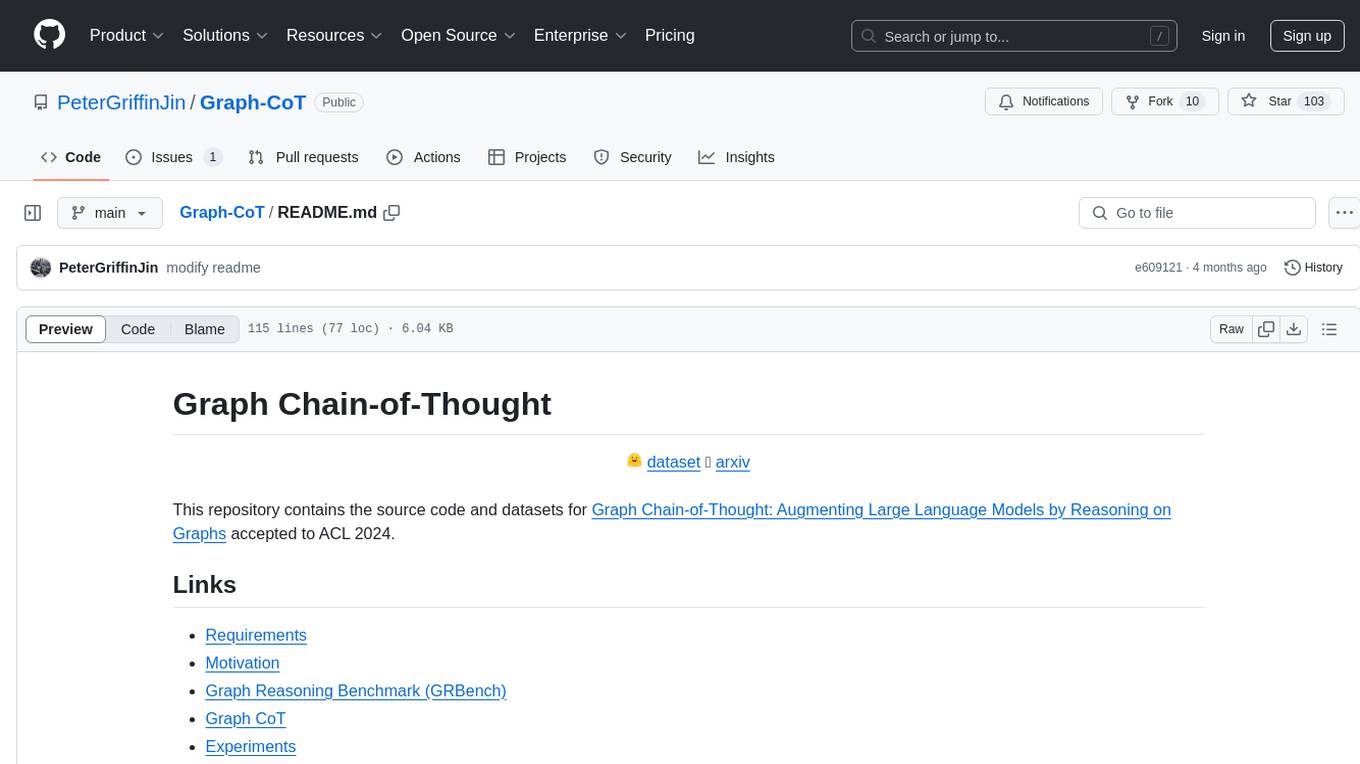
Graph-CoT
This repository contains the source code and datasets for Graph Chain-of-Thought: Augmenting Large Language Models by Reasoning on Graphs accepted to ACL 2024. It proposes a framework called Graph Chain-of-thought (Graph-CoT) to enable Language Models to traverse graphs step-by-step for reasoning, interaction, and execution. The motivation is to alleviate hallucination issues in Language Models by augmenting them with structured knowledge sources represented as graphs.
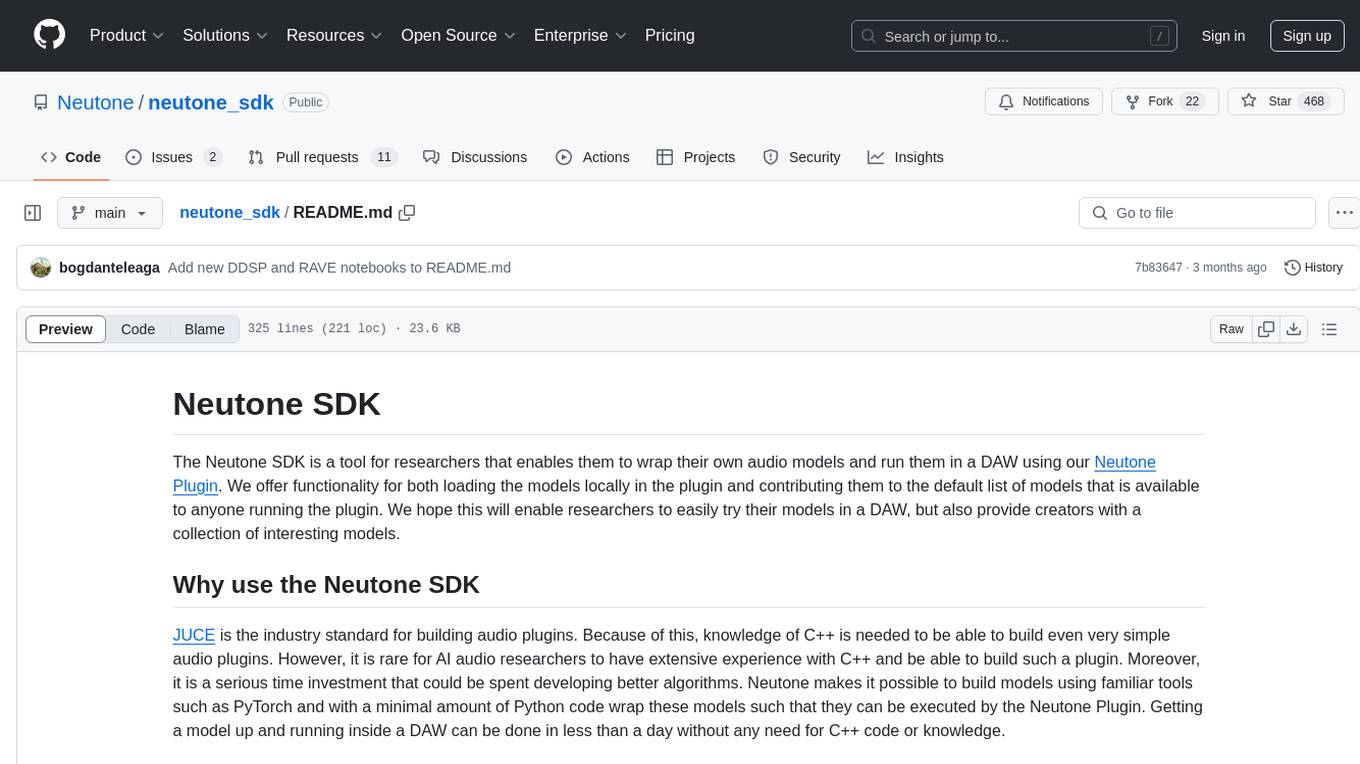
neutone_sdk
The Neutone SDK is a tool designed for researchers to wrap their own audio models and run them in a DAW using the Neutone Plugin. It simplifies the process by allowing models to be built using PyTorch and minimal Python code, eliminating the need for extensive C++ knowledge. The SDK provides support for buffering inputs and outputs, sample rate conversion, and profiling tools for model performance testing. It also offers examples, notebooks, and a submission process for sharing models with the community.
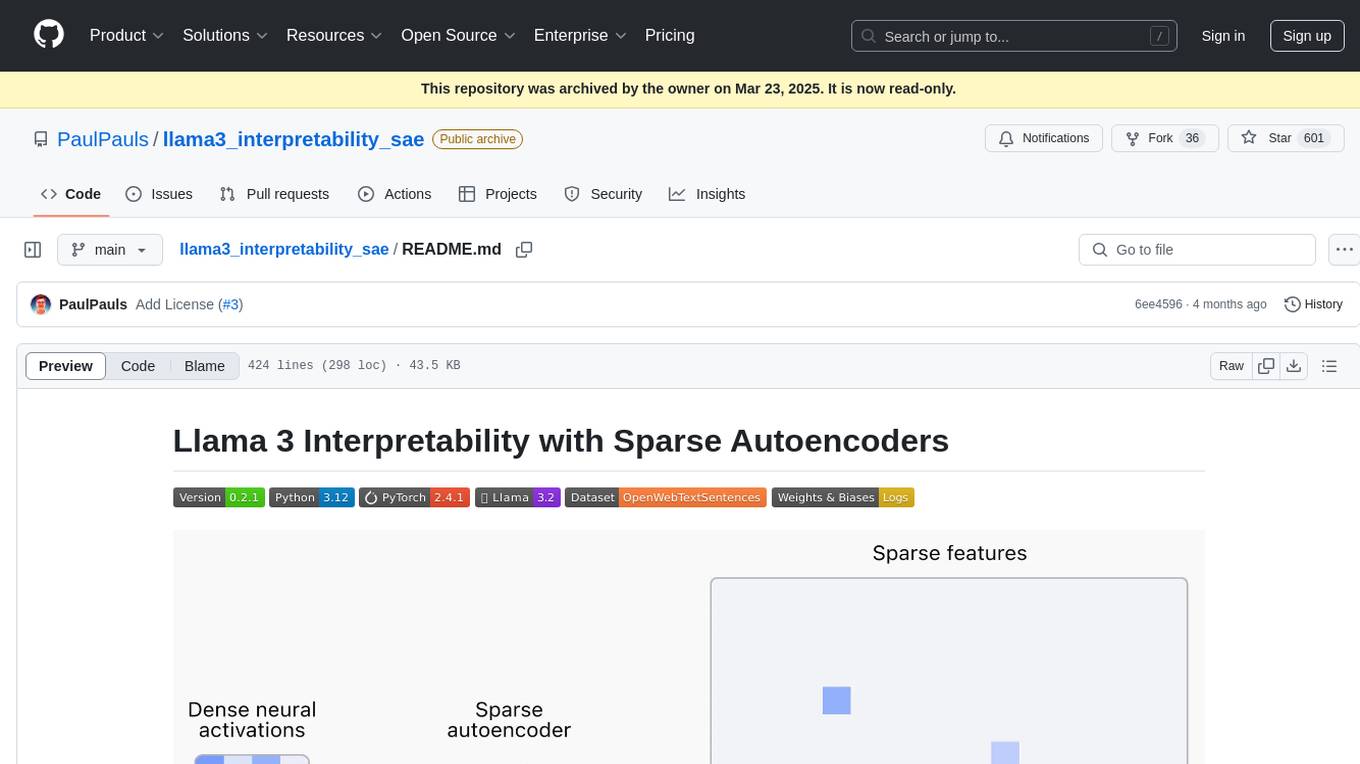
llama3_interpretability_sae
This project focuses on implementing Sparse Autoencoders (SAEs) for mechanistic interpretability in Large Language Models (LLMs) like Llama 3.2-3B. The SAEs aim to untangle superimposed representations in LLMs into separate, interpretable features for each neuron activation. The project provides an end-to-end pipeline for capturing training data, training the SAEs, analyzing learned features, and verifying results experimentally. It includes comprehensive logging, visualization, and checkpointing of SAE training, interpretability analysis tools, and a pure PyTorch implementation of Llama 3.1/3.2 chat and text completion. The project is designed for scalability, efficiency, and maintainability.
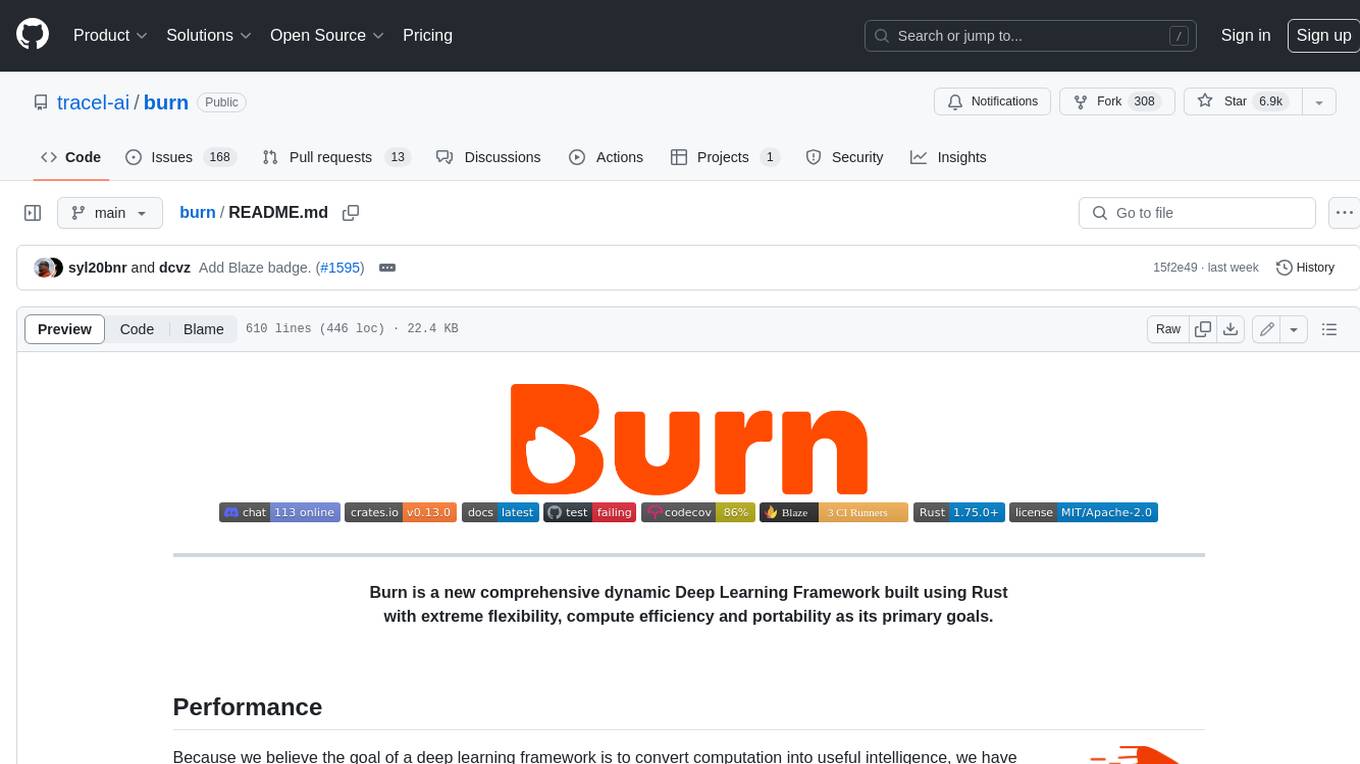
burn
Burn is a new comprehensive dynamic Deep Learning Framework built using Rust with extreme flexibility, compute efficiency and portability as its primary goals.
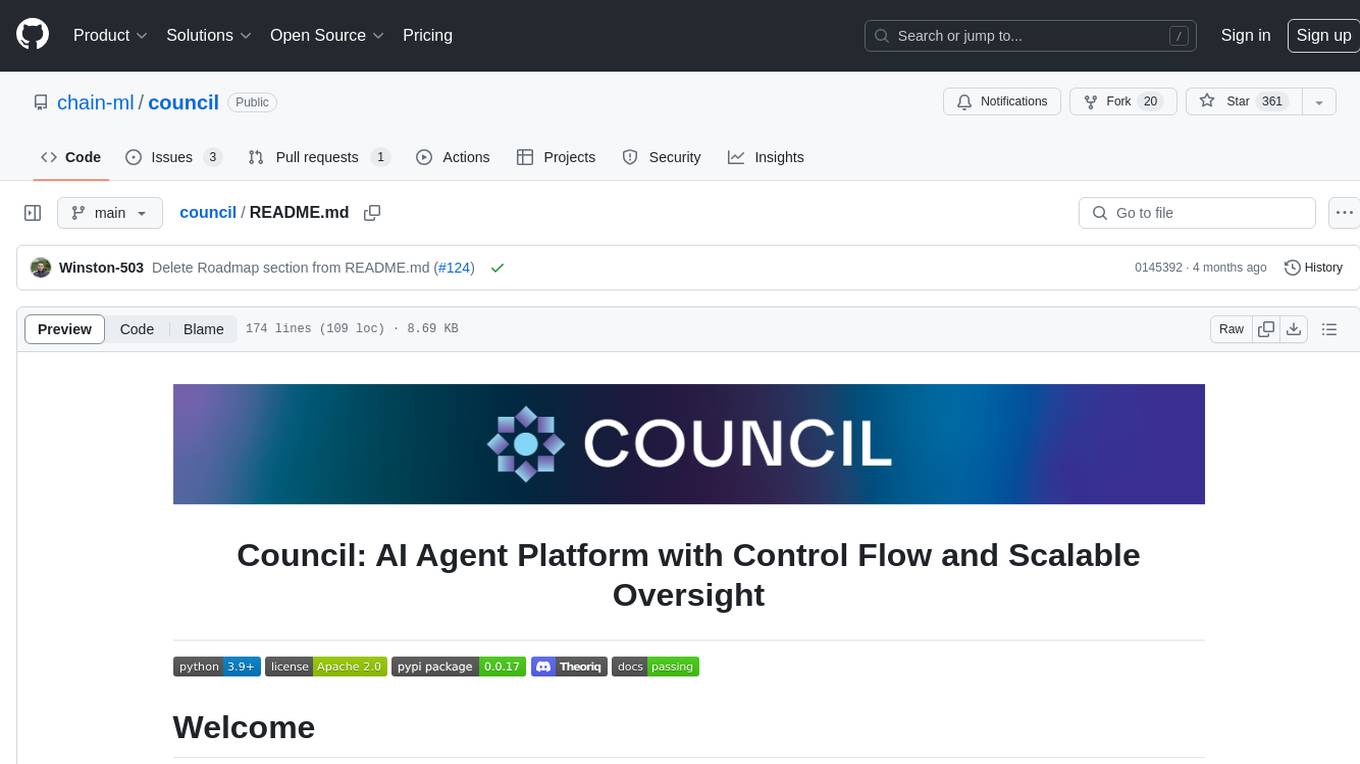
council
Council is an open-source platform designed for the rapid development and deployment of customized generative AI applications using teams of agents. It extends the LLM tool ecosystem by providing advanced control flow and scalable oversight for AI agents. Users can create sophisticated agents with predictable behavior by leveraging Council's powerful approach to control flow using Controllers, Filters, Evaluators, and Budgets. The framework allows for automated routing between agents, comparing, evaluating, and selecting the best results for a task. Council aims to facilitate packaging and deploying agents at scale on multiple platforms while enabling enterprise-grade monitoring and quality control.
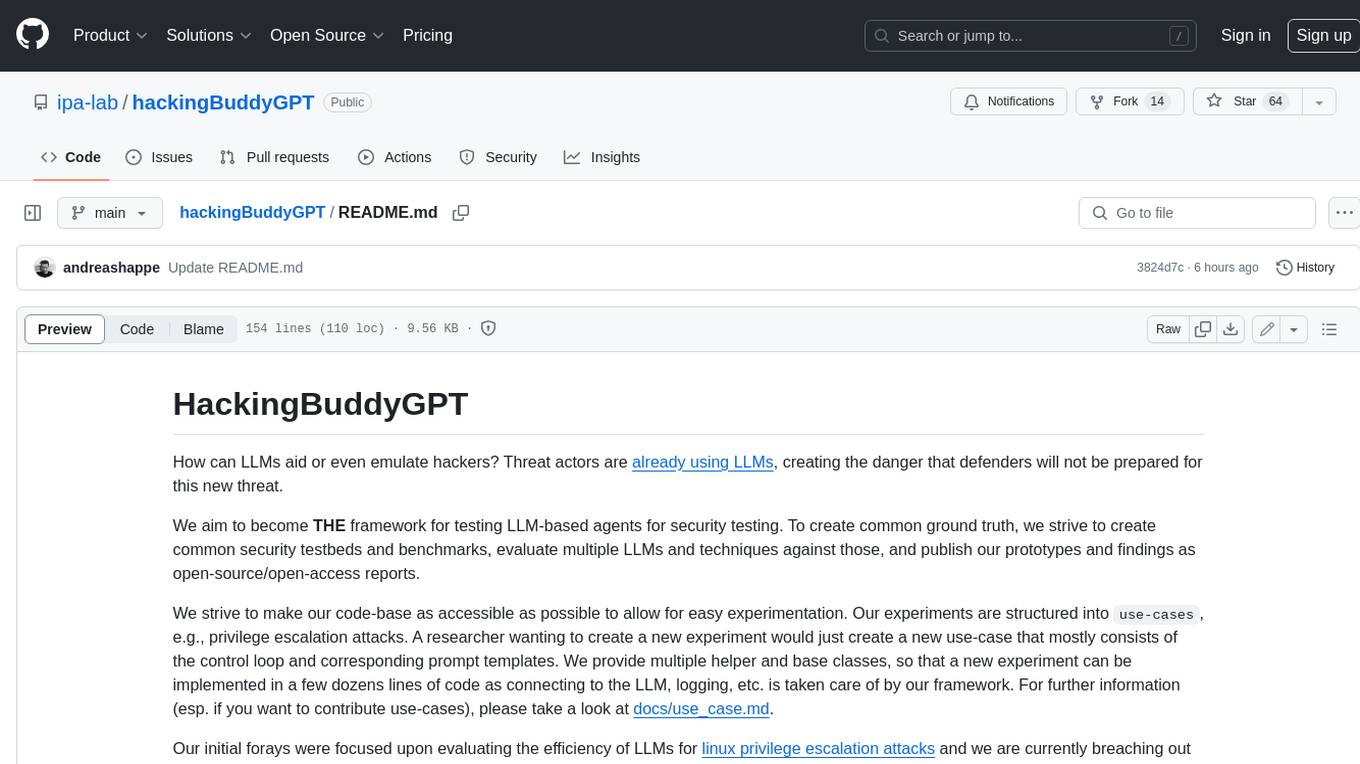
hackingBuddyGPT
hackingBuddyGPT is a framework for testing LLM-based agents for security testing. It aims to create common ground truth by creating common security testbeds and benchmarks, evaluating multiple LLMs and techniques against those, and publishing prototypes and findings as open-source/open-access reports. The initial focus is on evaluating the efficiency of LLMs for Linux privilege escalation attacks, but the framework is being expanded to evaluate the use of LLMs for web penetration-testing and web API testing. hackingBuddyGPT is released as open-source to level the playing field for blue teams against APTs that have access to more sophisticated resources.
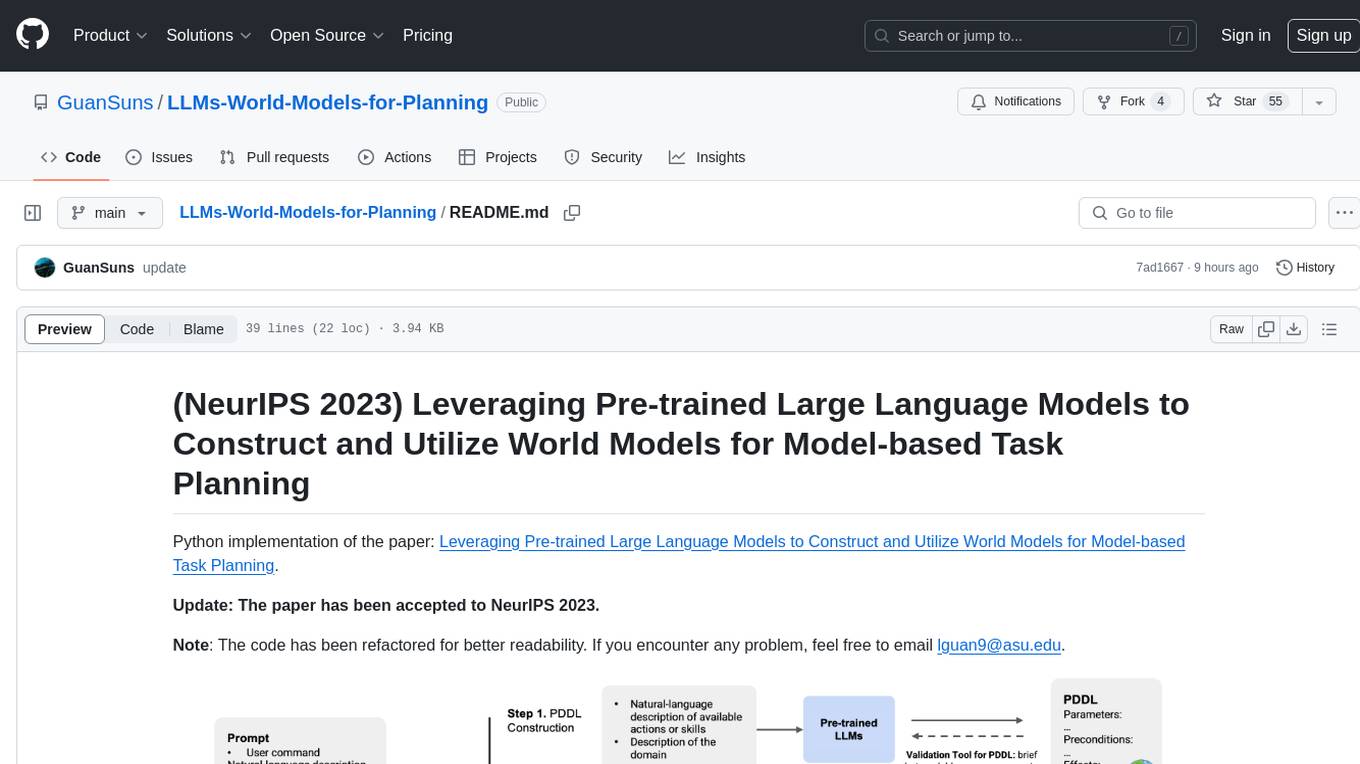
LLMs-World-Models-for-Planning
This repository provides a Python implementation of a method that leverages pre-trained large language models to construct and utilize world models for model-based task planning. It includes scripts to generate domain models using natural language descriptions, correct domain models based on feedback, and support plan generation for tasks in different domains. The code has been refactored for better readability and includes tools for validating PDDL syntax and handling corrective feedback.
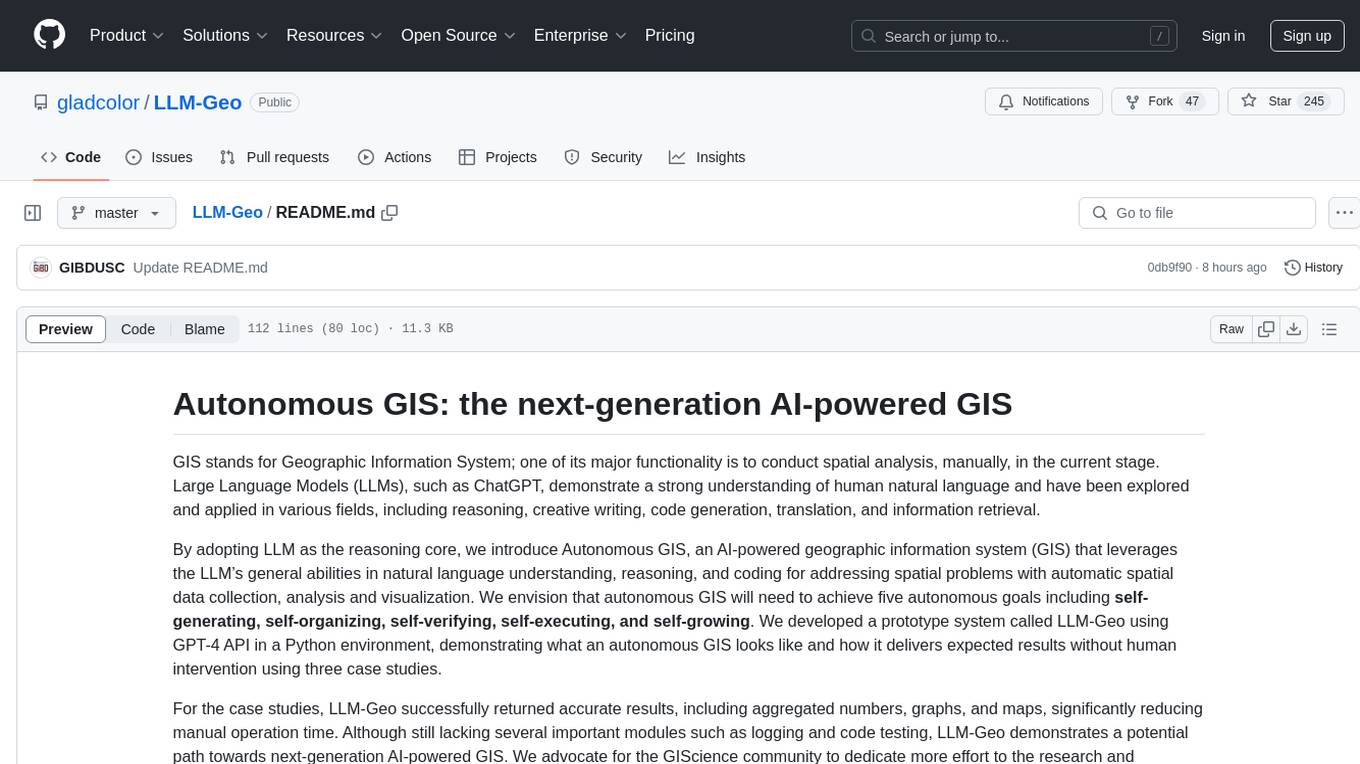
LLM-Geo
LLM-Geo is an AI-powered geographic information system (GIS) that leverages Large Language Models (LLMs) for automatic spatial data collection, analysis, and visualization. By adopting LLM as the reasoning core, it addresses spatial problems with self-generating, self-organizing, self-verifying, self-executing, and self-growing capabilities. The tool aims to make spatial analysis easier, faster, and more accessible by reducing manual operation time and delivering accurate results through case studies. It uses GPT-4 API in a Python environment and advocates for further research and development in autonomous GIS.
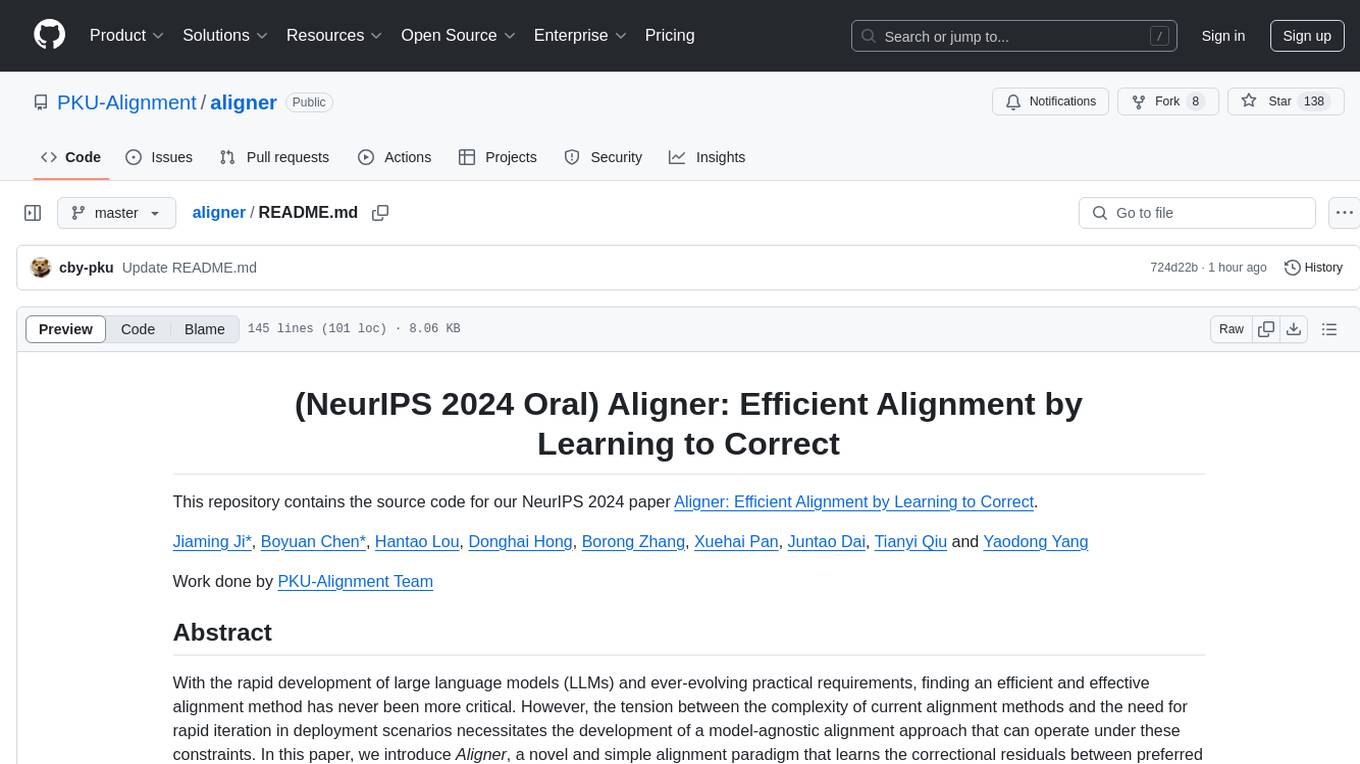
aligner
Aligner is a model-agnostic alignment tool designed to efficiently correct responses from large language models. It redistributes initial answers to align with human intentions, improving performance across various LLMs. The tool can be applied with minimal training, enhancing upstream models and reducing hallucination. Aligner's 'copy and correct' method preserves the base structure while enhancing responses. It achieves significant performance improvements in helpfulness, harmlessness, and honesty dimensions, with notable success in boosting Win Rates on evaluation leaderboards.
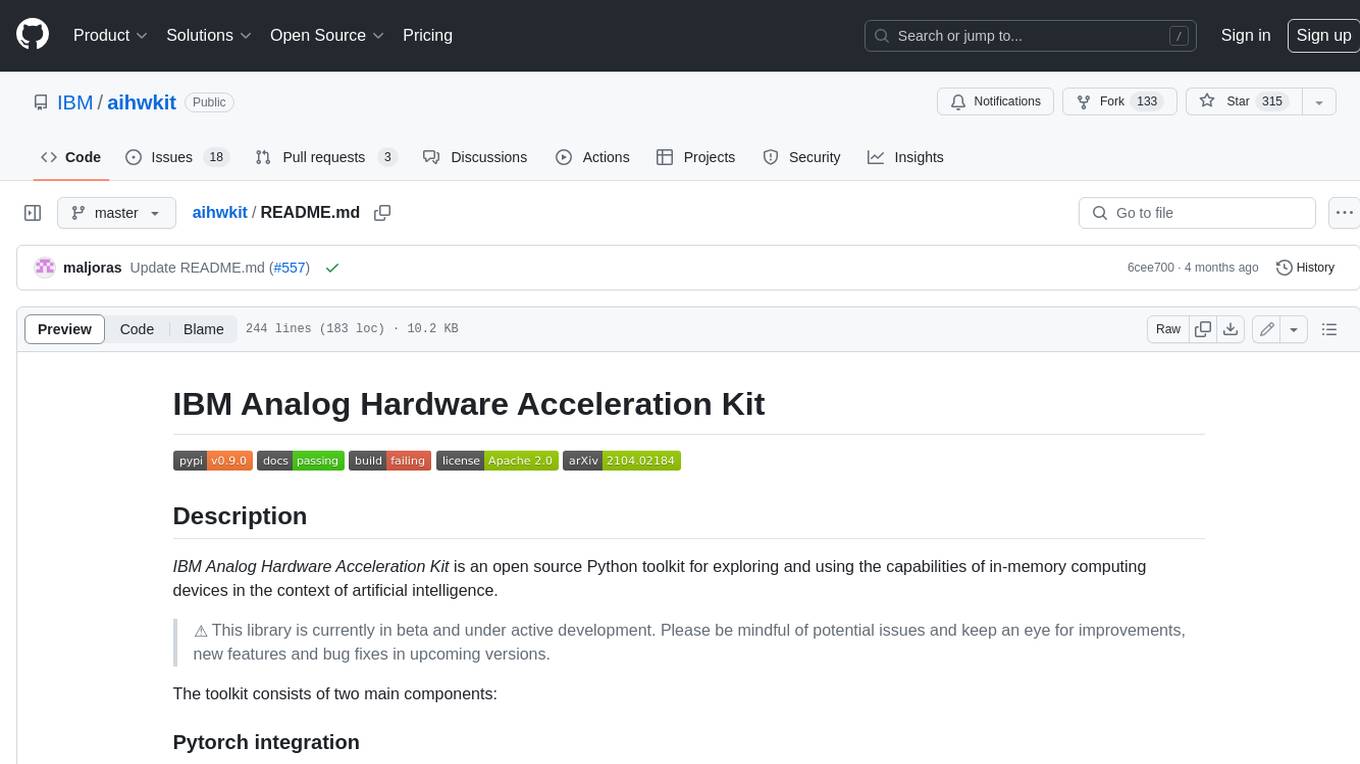
aihwkit
The IBM Analog Hardware Acceleration Kit is an open-source Python toolkit for exploring and using the capabilities of in-memory computing devices in the context of artificial intelligence. It consists of two main components: Pytorch integration and Analog devices simulator. The Pytorch integration provides a series of primitives and features that allow using the toolkit within PyTorch, including analog neural network modules, analog training using torch training workflow, and analog inference using torch inference workflow. The Analog devices simulator is a high-performant (CUDA-capable) C++ simulator that allows for simulating a wide range of analog devices and crossbar configurations by using abstract functional models of material characteristics with adjustable parameters. Along with the two main components, the toolkit includes other functionalities such as a library of device presets, a module for executing high-level use cases, a utility to automatically convert a downloaded model to its equivalent Analog model, and integration with the AIHW Composer platform. The toolkit is currently in beta and under active development, and users are advised to be mindful of potential issues and keep an eye for improvements, new features, and bug fixes in upcoming versions.

airflow
Apache Airflow (or simply Airflow) is a platform to programmatically author, schedule, and monitor workflows. When workflows are defined as code, they become more maintainable, versionable, testable, and collaborative. Use Airflow to author workflows as directed acyclic graphs (DAGs) of tasks. The Airflow scheduler executes your tasks on an array of workers while following the specified dependencies. Rich command line utilities make performing complex surgeries on DAGs a snap. The rich user interface makes it easy to visualize pipelines running in production, monitor progress, and troubleshoot issues when needed.
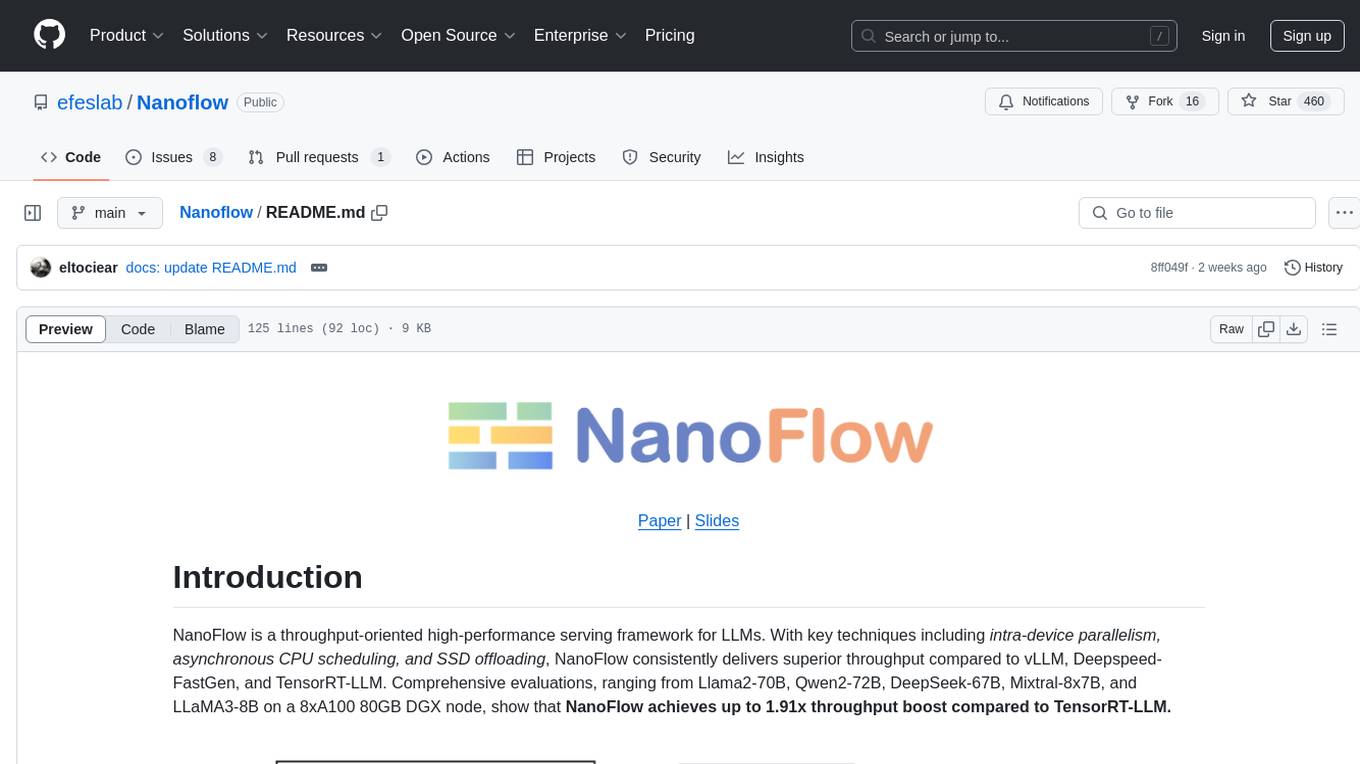
Nanoflow
NanoFlow is a throughput-oriented high-performance serving framework for Large Language Models (LLMs) that consistently delivers superior throughput compared to other frameworks by utilizing key techniques such as intra-device parallelism, asynchronous CPU scheduling, and SSD offloading. The framework proposes nano-batching to schedule compute-, memory-, and network-bound operations for simultaneous execution, leading to increased resource utilization. NanoFlow also adopts an asynchronous control flow to optimize CPU overhead and eagerly offloads KV-Cache to SSDs for multi-round conversations. The open-source codebase integrates state-of-the-art kernel libraries and provides necessary scripts for environment setup and experiment reproduction.
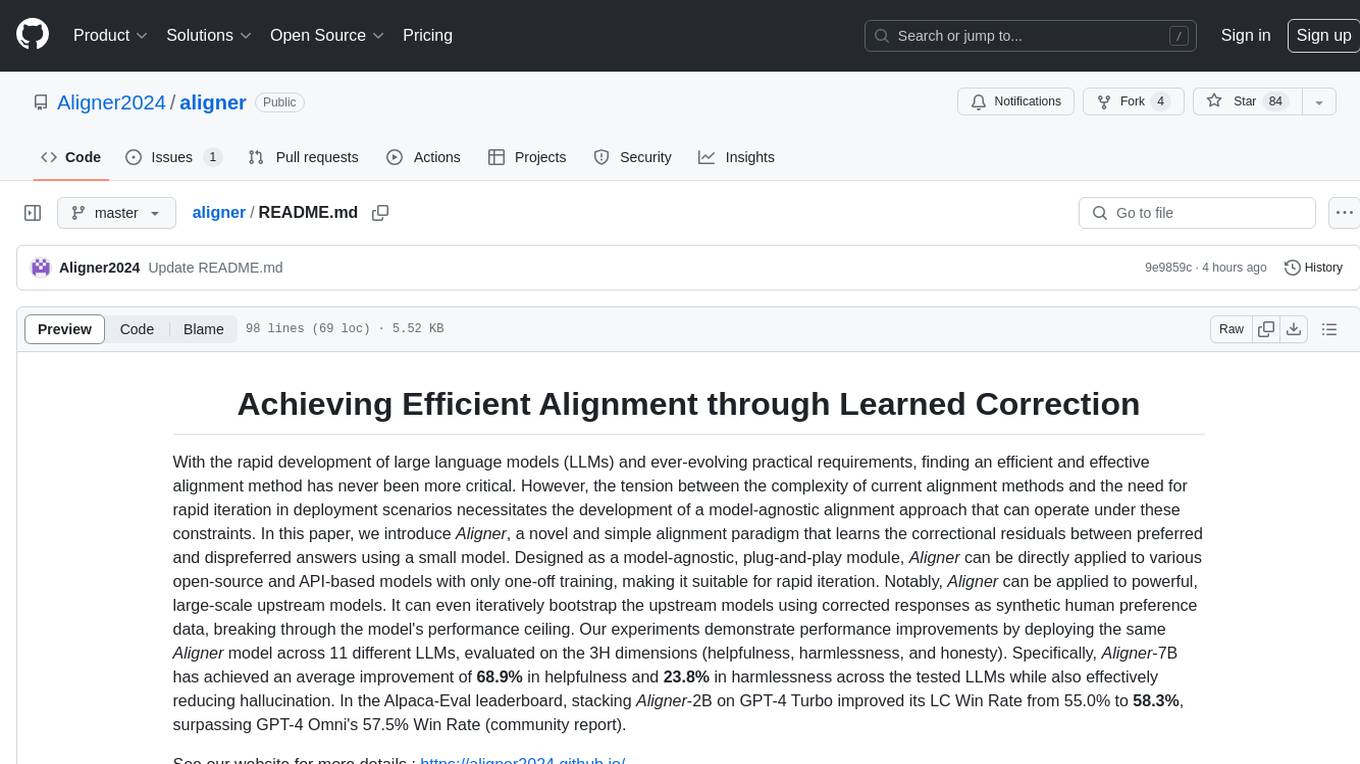
aligner
Aligner is a model-agnostic alignment tool that learns correctional residuals between preferred and dispreferred answers using a small model. It can be directly applied to various open-source and API-based models with only one-off training, suitable for rapid iteration and improving model performance. Aligner has shown significant improvements in helpfulness, harmlessness, and honesty dimensions across different large language models.
For similar tasks
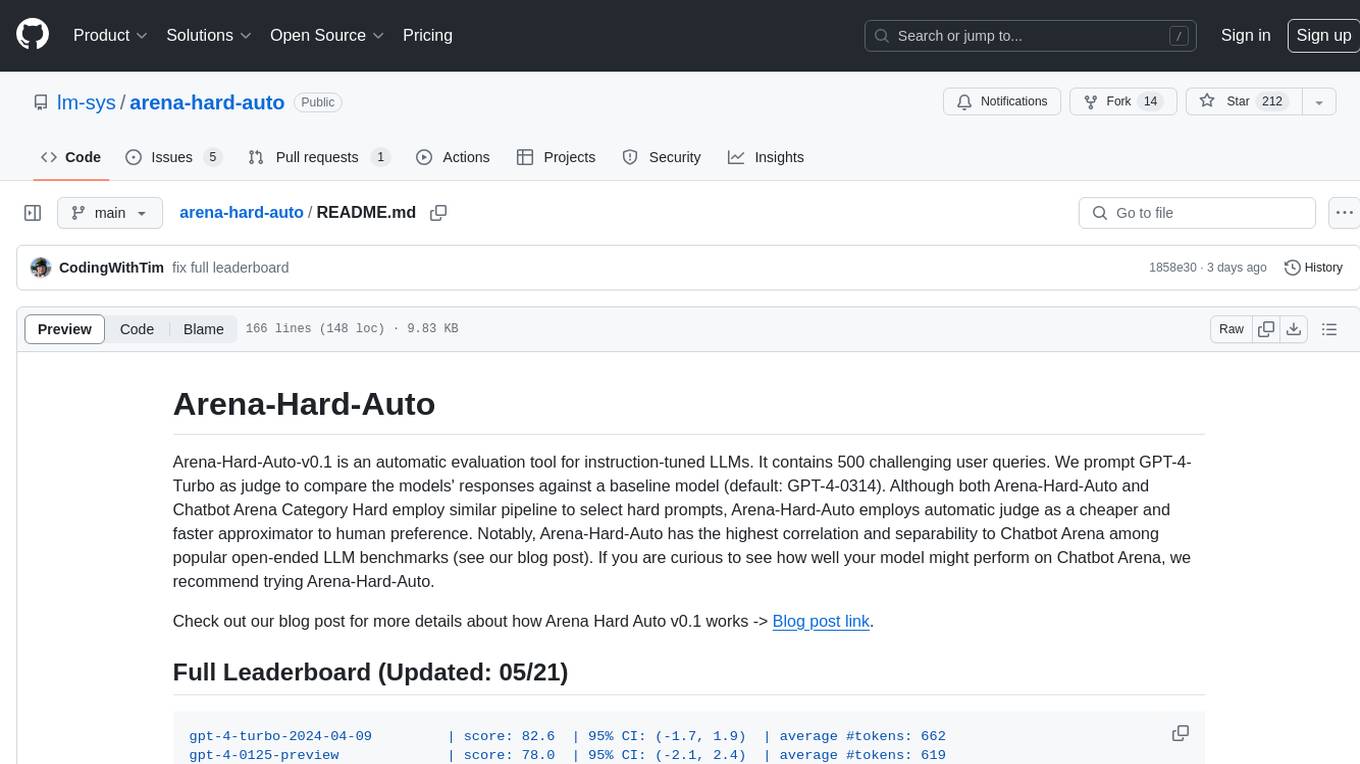
arena-hard-auto
Arena-Hard-Auto-v0.1 is an automatic evaluation tool for instruction-tuned LLMs. It contains 500 challenging user queries. The tool prompts GPT-4-Turbo as a judge to compare models' responses against a baseline model (default: GPT-4-0314). Arena-Hard-Auto employs an automatic judge as a cheaper and faster approximator to human preference. It has the highest correlation and separability to Chatbot Arena among popular open-ended LLM benchmarks. Users can evaluate their models' performance on Chatbot Arena by using Arena-Hard-Auto.
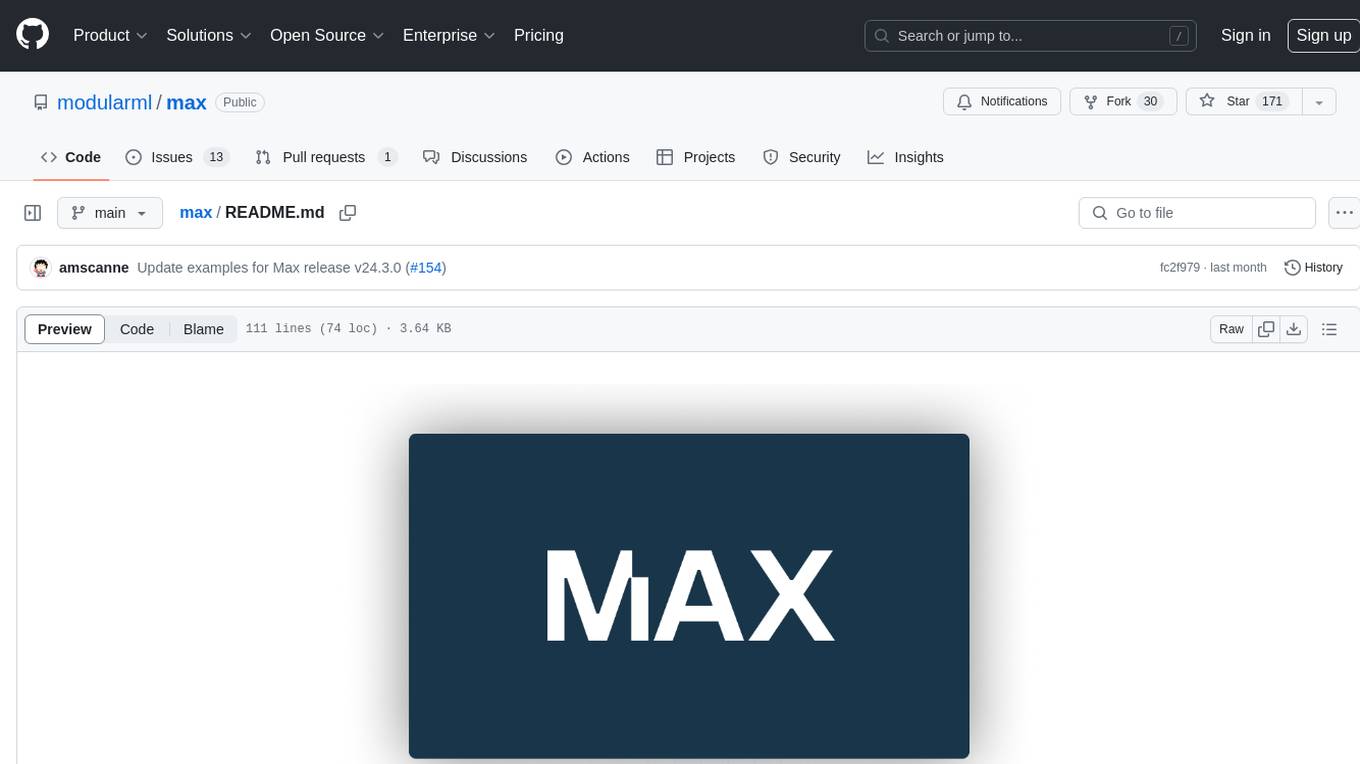
max
The Modular Accelerated Xecution (MAX) platform is an integrated suite of AI libraries, tools, and technologies that unifies commonly fragmented AI deployment workflows. MAX accelerates time to market for the latest innovations by giving AI developers a single toolchain that unlocks full programmability, unparalleled performance, and seamless hardware portability.
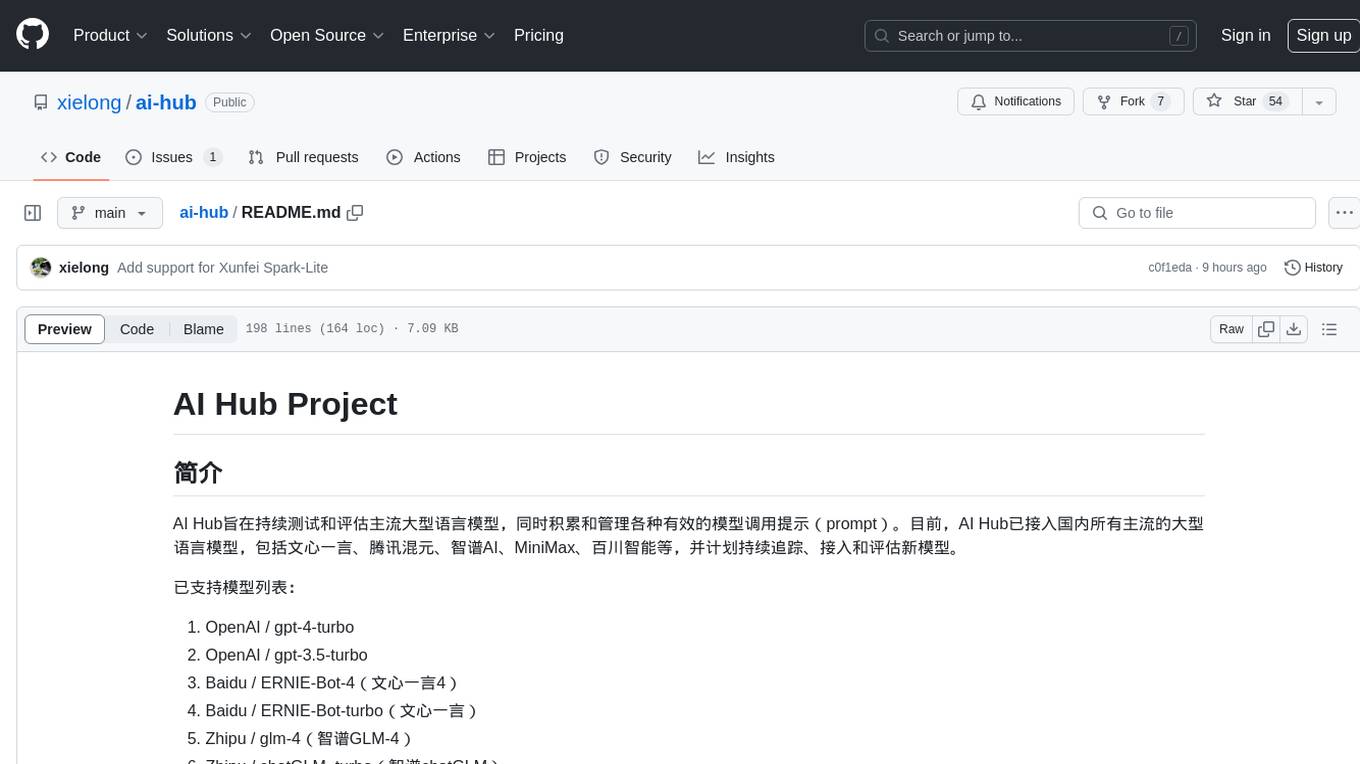
ai-hub
AI Hub Project aims to continuously test and evaluate mainstream large language models, while accumulating and managing various effective model invocation prompts. It has integrated all mainstream large language models in China, including OpenAI GPT-4 Turbo, Baidu ERNIE-Bot-4, Tencent ChatPro, MiniMax abab5.5-chat, and more. The project plans to continuously track, integrate, and evaluate new models. Users can access the models through REST services or Java code integration. The project also provides a testing suite for translation, coding, and benchmark testing.
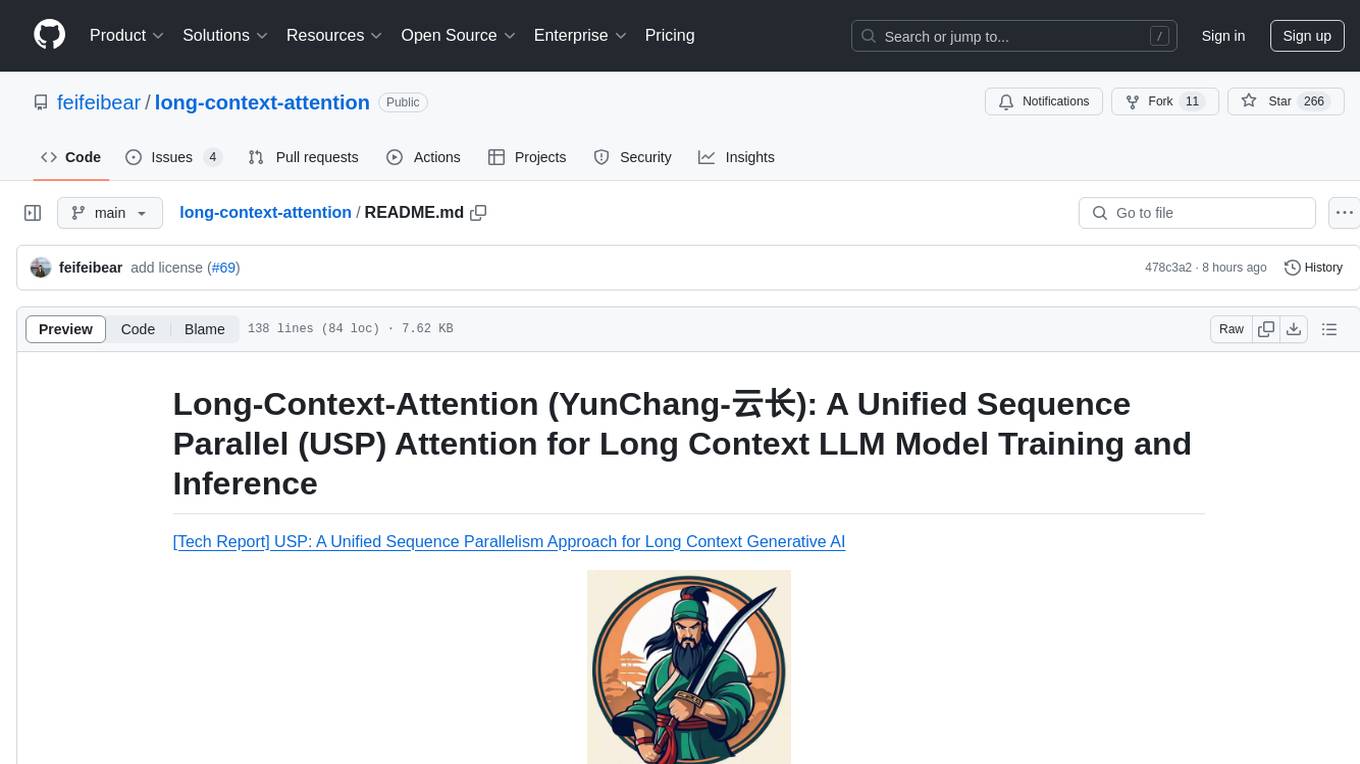
long-context-attention
Long-Context-Attention (YunChang) is a unified sequence parallel approach that combines the strengths of DeepSpeed-Ulysses-Attention and Ring-Attention to provide a versatile and high-performance solution for long context LLM model training and inference. It addresses the limitations of both methods by offering no limitation on the number of heads, compatibility with advanced parallel strategies, and enhanced performance benchmarks. The tool is verified in Megatron-LM and offers best practices for 4D parallelism, making it suitable for various attention mechanisms and parallel computing advancements.

marlin
Marlin is a highly optimized FP16xINT4 matmul kernel designed for large language model (LLM) inference, offering close to ideal speedups up to batchsizes of 16-32 tokens. It is suitable for larger-scale serving, speculative decoding, and advanced multi-inference schemes like CoT-Majority. Marlin achieves optimal performance by utilizing various techniques and optimizations to fully leverage GPU resources, ensuring efficient computation and memory management.
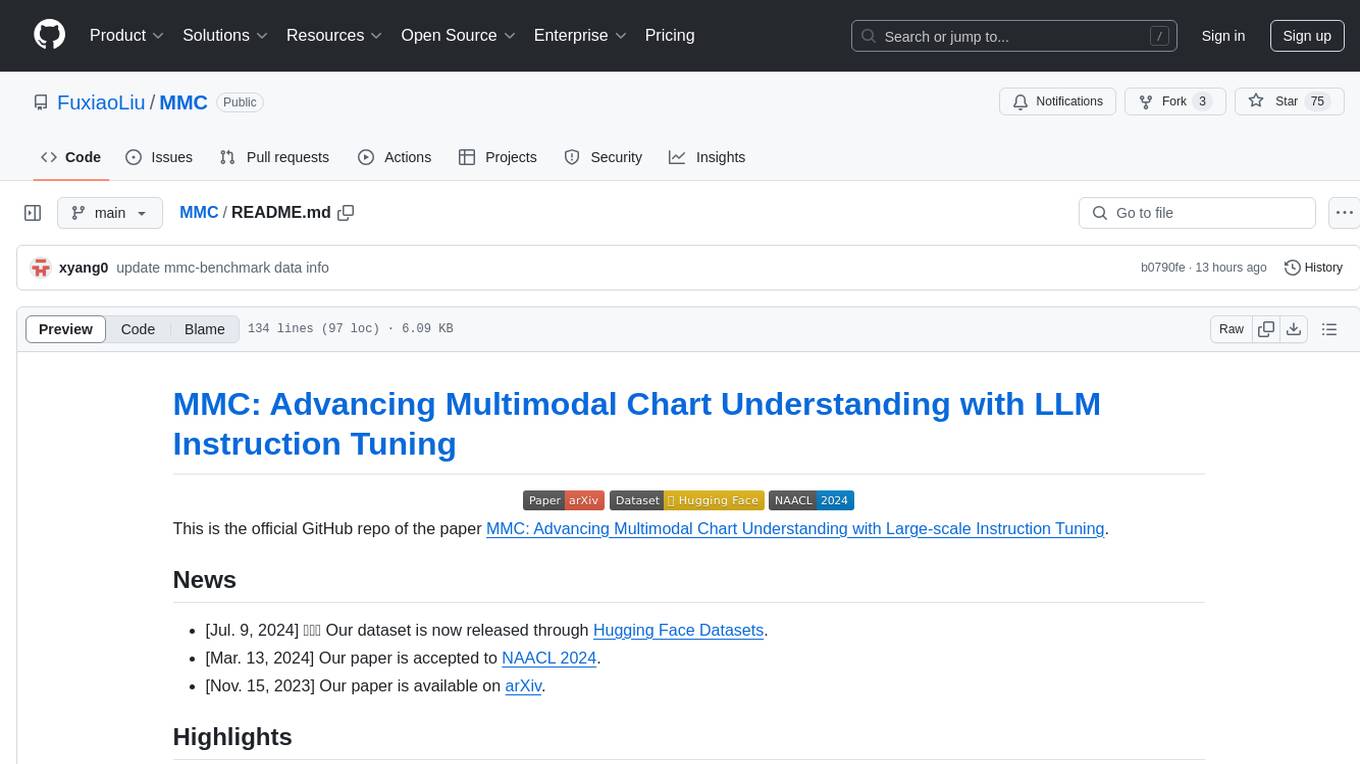
MMC
This repository, MMC, focuses on advancing multimodal chart understanding through large-scale instruction tuning. It introduces a dataset supporting various tasks and chart types, a benchmark for evaluating reasoning capabilities over charts, and an assistant achieving state-of-the-art performance on chart QA benchmarks. The repository provides data for chart-text alignment, benchmarking, and instruction tuning, along with existing datasets used in experiments. Additionally, it offers a Gradio demo for the MMCA model.
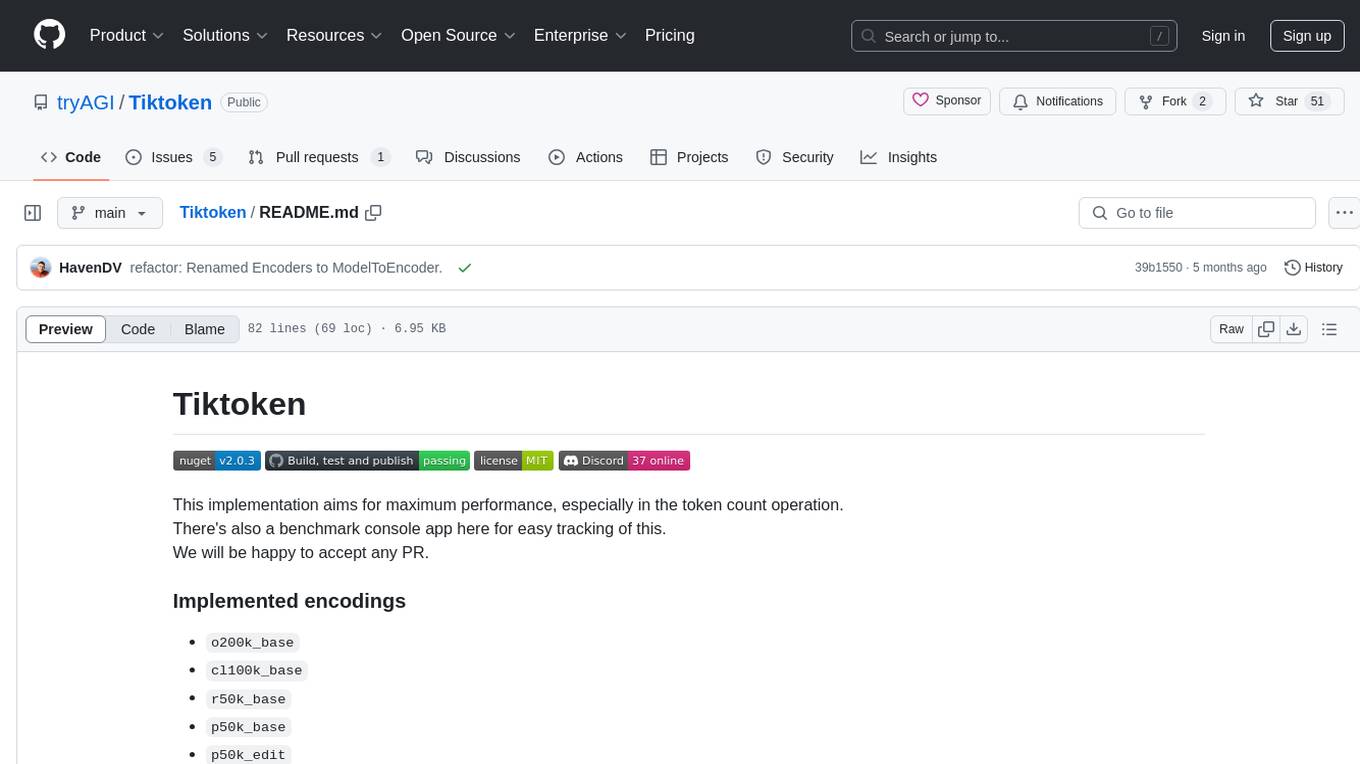
Tiktoken
Tiktoken is a high-performance implementation focused on token count operations. It provides various encodings like o200k_base, cl100k_base, r50k_base, p50k_base, and p50k_edit. Users can easily encode and decode text using the provided API. The repository also includes a benchmark console app for performance tracking. Contributions in the form of PRs are welcome.
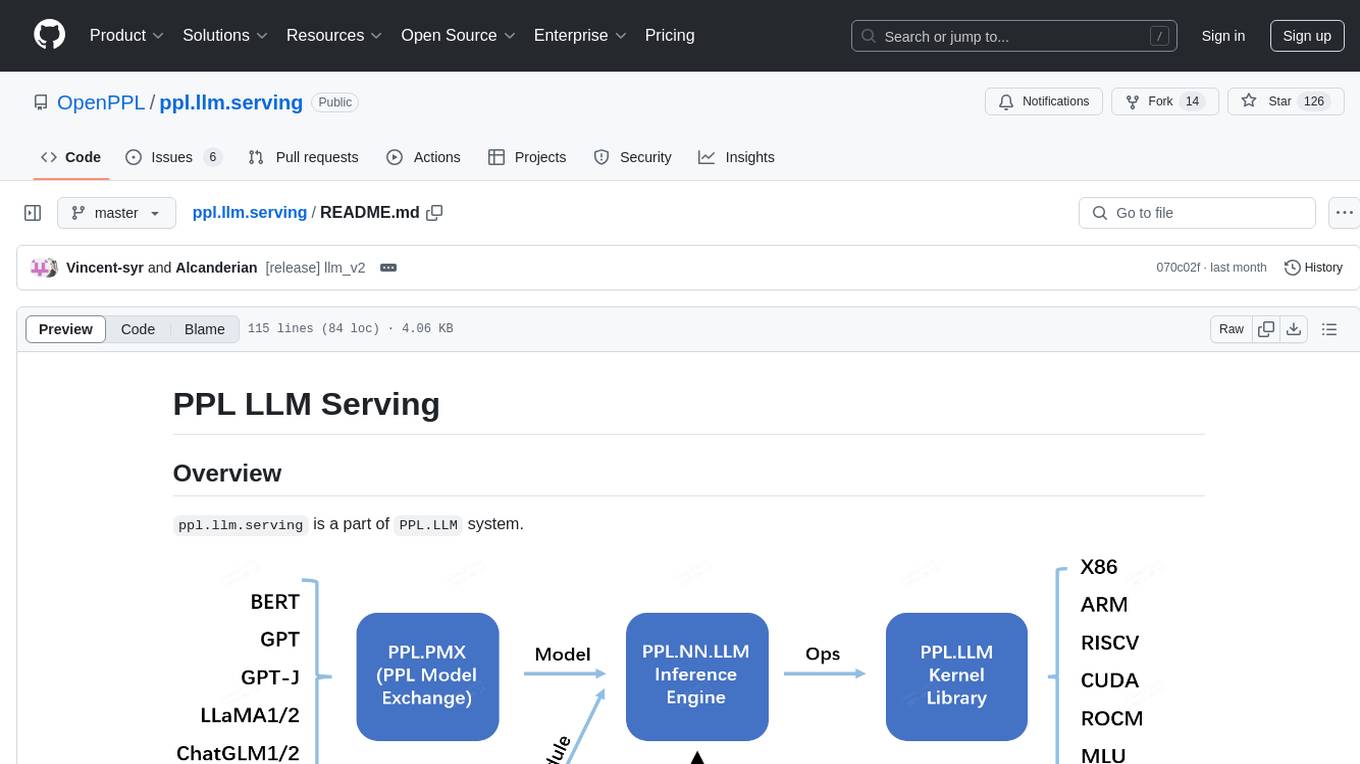
ppl.llm.serving
ppl.llm.serving is a serving component for Large Language Models (LLMs) within the PPL.LLM system. It provides a server based on gRPC and supports inference for LLaMA. The repository includes instructions for prerequisites, quick start guide, model exporting, server setup, client usage, benchmarking, and offline inference. Users can refer to the LLaMA Guide for more details on using this serving component.
For similar jobs

weave
Weave is a toolkit for developing Generative AI applications, built by Weights & Biases. With Weave, you can log and debug language model inputs, outputs, and traces; build rigorous, apples-to-apples evaluations for language model use cases; and organize all the information generated across the LLM workflow, from experimentation to evaluations to production. Weave aims to bring rigor, best-practices, and composability to the inherently experimental process of developing Generative AI software, without introducing cognitive overhead.

LLMStack
LLMStack is a no-code platform for building generative AI agents, workflows, and chatbots. It allows users to connect their own data, internal tools, and GPT-powered models without any coding experience. LLMStack can be deployed to the cloud or on-premise and can be accessed via HTTP API or triggered from Slack or Discord.

VisionCraft
The VisionCraft API is a free API for using over 100 different AI models. From images to sound.

kaito
Kaito is an operator that automates the AI/ML inference model deployment in a Kubernetes cluster. It manages large model files using container images, avoids tuning deployment parameters to fit GPU hardware by providing preset configurations, auto-provisions GPU nodes based on model requirements, and hosts large model images in the public Microsoft Container Registry (MCR) if the license allows. Using Kaito, the workflow of onboarding large AI inference models in Kubernetes is largely simplified.

PyRIT
PyRIT is an open access automation framework designed to empower security professionals and ML engineers to red team foundation models and their applications. It automates AI Red Teaming tasks to allow operators to focus on more complicated and time-consuming tasks and can also identify security harms such as misuse (e.g., malware generation, jailbreaking), and privacy harms (e.g., identity theft). The goal is to allow researchers to have a baseline of how well their model and entire inference pipeline is doing against different harm categories and to be able to compare that baseline to future iterations of their model. This allows them to have empirical data on how well their model is doing today, and detect any degradation of performance based on future improvements.

tabby
Tabby is a self-hosted AI coding assistant, offering an open-source and on-premises alternative to GitHub Copilot. It boasts several key features: * Self-contained, with no need for a DBMS or cloud service. * OpenAPI interface, easy to integrate with existing infrastructure (e.g Cloud IDE). * Supports consumer-grade GPUs.

spear
SPEAR (Simulator for Photorealistic Embodied AI Research) is a powerful tool for training embodied agents. It features 300 unique virtual indoor environments with 2,566 unique rooms and 17,234 unique objects that can be manipulated individually. Each environment is designed by a professional artist and features detailed geometry, photorealistic materials, and a unique floor plan and object layout. SPEAR is implemented as Unreal Engine assets and provides an OpenAI Gym interface for interacting with the environments via Python.

Magick
Magick is a groundbreaking visual AIDE (Artificial Intelligence Development Environment) for no-code data pipelines and multimodal agents. Magick can connect to other services and comes with nodes and templates well-suited for intelligent agents, chatbots, complex reasoning systems and realistic characters.



